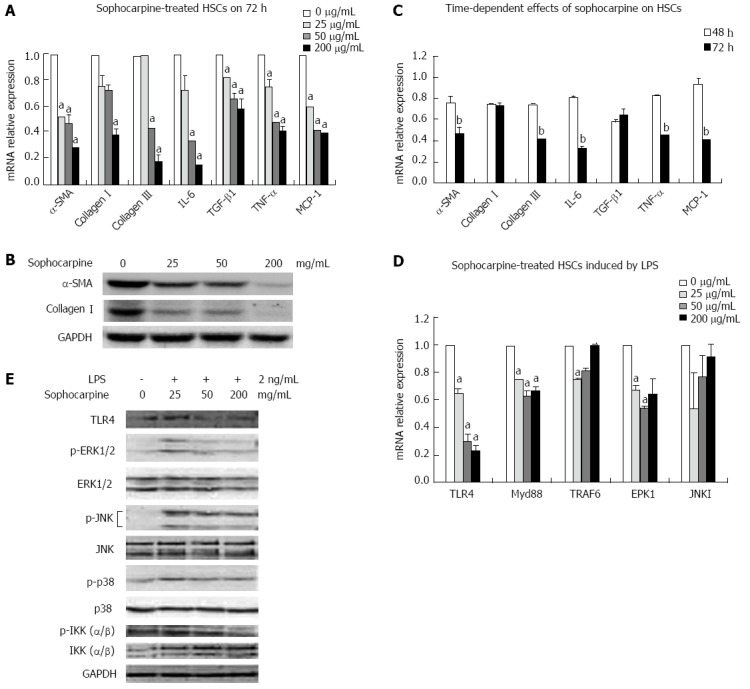Figure 4.

Sophocarpine inhibits the activation of hepatic stellate cells by blocking the lipopolysaccharide-induced toll-like receptor 4 signaling pathway. Primary HSCs were isolated and plated in 6-well plates (1 × 106 cells/well). Forty-eight hours later, the HSCs were treated with a gradient concentration of sophocarpine for 48 or 72 h. A: Real-time reverse transcription-polymerase chain reaction (RT-PCR) was performed to analyze the mRNA levels of α-SMA, collagen I, collagen III, IL-6, TGF-β1, TNF-α and MCP-1 in HSCs treated with a gradient concentration of sophocarpine for 72 h (compared to 0 μg/mL, aP < 0.05); B: Immunoblots of α-SMA, collagen I and GAPDH were detected by Western blot from HSCs treated with a gradient concentration of sophocarpine for 72 h; C: The mRNA expression of the above genes was detected in HSCs treated with sophocarpine (50 mg/mL) at 72 h compared to that at 48 h, bP < 0.05; D, E: Gradient concentration sophocarpine-treated HSCs were incubated with LPS (2 ng/mL), and real-time RT-PCR (compared to 0 μg/mL, aP < 0.05, D) and Western blot analysis (E) were employed to detect the expression of TLR4 pathway-related genes at the gene and protein levels (P value by two-tailed Student’s t test). LPS: Lipopolysaccharide; HSCs: Hepatic stellate cells; TGF-β: Transforming growth factor-β; IL-6: Interleukin-6; SMA: Smooth muscle actin; TNF: Tumor necrosis factor; MCP: Monocyte chemoattractant protein.
